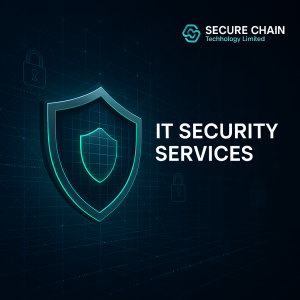Cybersecurity Blind Spots: What You Need to Know
Even organisations with strong security practices can miss critical vulnerabilities. Over time, these blind spots—areas in your infrastructure that lack visibility or control—can turn into entry points for data breaches, ransomware, or insider threats. That’s why identifying and fixing these gaps is key to building a strong cybersecurity foundation.
What Are Cybersecurity Blind Spots?
Blind spots are parts of your IT environment that don’t get enough monitoring or protection. Often, they appear due to rapid tech adoption, disconnected tools, or the assumption that current defenses are enough. For example, common blind spots include:
- Unpatched systems
- Shadow IT
- Poor access controls
- Inadequate employee training
- Third-party risks
- Mobile and IoT device vulnerabilities
- Weak incident response planning
Top Blind Spots to Watch For
1. Employee Awareness & Training
Employees are often the weakest link. Without proper training, they may fall prey to phishing, social engineering, or mishandle sensitive data. A lack of awareness can lead to accidental breaches that are difficult to detect.
Remediation: Implement a robust security awareness program covering phishing detection, password hygiene, and data handling policies. Use simulated attacks to reinforce learning.
2. Third-Party & Supply Chain Risks
Vendors and contractors with access to your systems can introduce vulnerabilities. Many organizations fail to assess or monitor these external entities adequately.
Remediation: Establish a vendor risk management framework. Conduct regular security assessments, enforce contractual security clauses, and monitor integrations continuously
3. Patch Management & Outdated Software
Delayed patching leaves systems exposed to known exploits. Internal audits often reveal critical updates pending for weeks or months
Remediation: Use automated patch management tools like Qualys or Microsoft Defender to schedule and verify patch deployments. Prioritize based on CVSS scores, exploitability, and asset criticality
4. Access Controls & Identity Management
Improperly configured access controls can allow unauthorized access to sensitive systems. Role-based access is often implemented but not regularly reviewed.
Remediation: Deploy IAM solutions with multi-factor authentication, role-based access, and periodic access reviews. Integrate with SIEM tools for real-time monitoring
5. Shadow IT
Employees using unauthorized apps or cloud services bypass security protocols, creating hidden vulnerabilities.
Remediation: Implement discovery tools to detect shadow IT. Create a governance framework to assess and approve new technologies before adoption
6. Mobile & IoT Device Security
Remote work and IoT proliferation have expanded the attack surface. Many devices lack proper security configurations.
Remediation: Extend endpoint protection to mobile and IoT devices. Use network segmentation and continuous monitoring to isolate and secure these endpoints
7. Incident Response Gaps
Without a tested incident response plan, organizations struggle to contain and recover from breaches.
Remediation: Develop and regularly test IR plans. Include playbooks for common attack scenarios and ensure cross-functional coordination
8. Data Encryption & Loss Prevention
Unencrypted data and lack of DLP controls can lead to regulatory violations and reputational damage.
Remediation: Encrypt data at rest and in transit. Deploy DLP solutions to monitor and restrict unauthorized data transfers
Strategic Recommendations
- Know Your Environment: Map your entire IT landscape, including cloud, identity, and networking platforms. Visibility is the first step to control
- Integrate Tools: Use APIs to connect EDR, vulnerability management, and asset tracking platforms. Correlate data for better insights.
- Leverage AI: AI-driven analytics can accelerate threat detection and reduce false positives.
- Modernize Continuously: Invest in scalable, adaptive security tools. Avoid relying solely on compliance checklists.
- Activate Human Firewalls: Foster a culture of security awareness across all levels of the organization.





